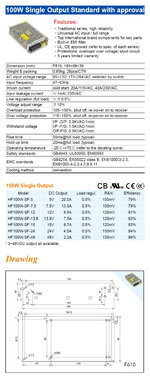h3ndrix
Newbie level 6
Hello,
I need help on something that I cant quite get my head around. I am using a psu with +15v and -15v output for a galvo head. For the specific head, I need to add a delay circuit that delays both power lines for a sec. I found a lot of positive voltage delay circuits but dont have a clue what a negative voltage delay circuit would look like. Any pointers would be appreciated. Thank you.
I need help on something that I cant quite get my head around. I am using a psu with +15v and -15v output for a galvo head. For the specific head, I need to add a delay circuit that delays both power lines for a sec. I found a lot of positive voltage delay circuits but dont have a clue what a negative voltage delay circuit would look like. Any pointers would be appreciated. Thank you.
